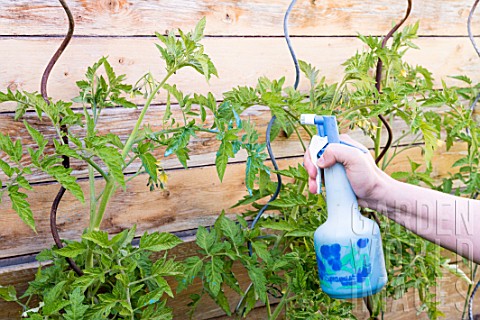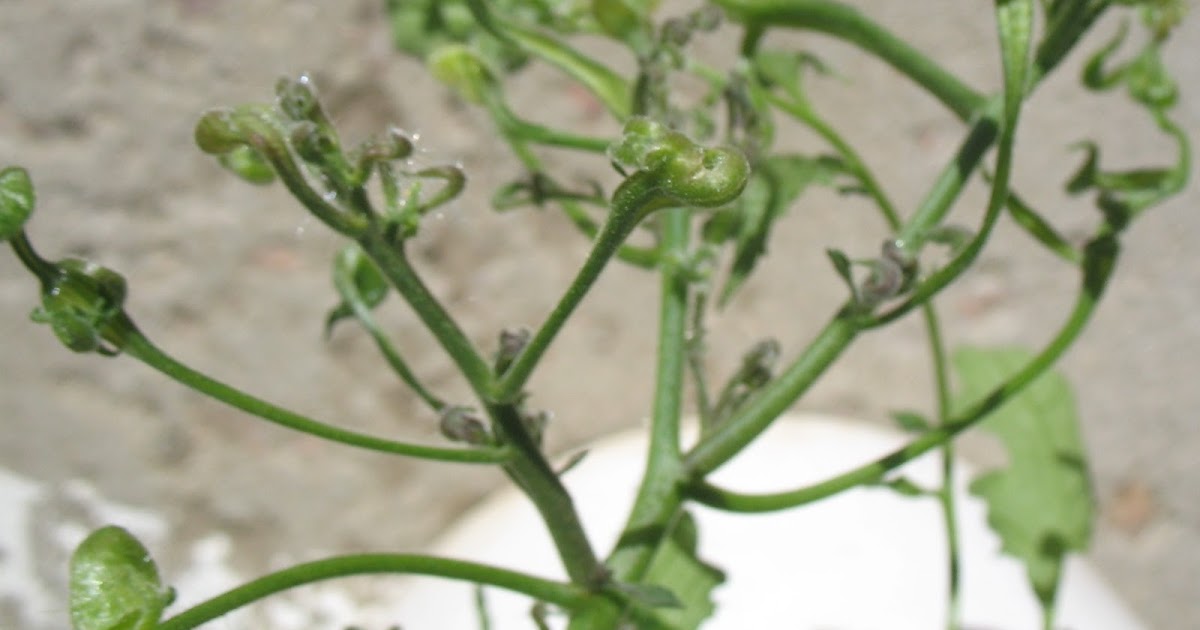
Generally, the same conditions that are good for early blight also favor another key fungal disease, Septoria leaf spot. Long periods of rain also favor the disease, if temperatures are warm. In New England, these conditions occur most often during July and August. Weather conditions that create long periods of dew at night, with night temperatures above 65☏ - and especially, above 70 ☏ - are the most favorable. Below 60☏, development is slower, and below 55☏, very little activity occurs. The fastest development occurs in the range between about 65 ☏ and 85☏. Temperature determines how fast these events happen. In both cases, the longer the period that leaves are wet, the better - for the pathogen. Growth of lesions and production of new spores are also favored by leaf moisture. The leaf surface must be wet in order for spores to germinate. What constitutes “favorable conditions”? There are two key factors: temperature and leaf-wetness. This rapid reproductive cycle explains why the disease can expand so rapidly and defoliate a crop within a matter of weeks.

Under favorable conditions, this complete cycle - from a spore landing on a leaf to production of thousands of new spores - takes about one week. These lesions produce new spores, which are spread by wind or running water, or carried by workers or implements onto new foliage. Fungal mycelia grow and expand, producing characteristic brown, circular lesions with dark concentric rings like a target board. Early blight disease begins when Alternaria spores (conidia) land on the leaf surface, germinate, and penetrate the leaf tissue. In four years of trials, we have seen reductions of 9% to 52% in the total marketable fruit due to early blight, in unsprayed plots.Īlternaria solani, the organism that causes early blight, is a fungal pathogen that attacks several solanaceous crops including potato and eggplant. Uncontrolled, early blight can completely defoliate tomato plants and cut short the harvest. However, it is not until mid- to late August that we see rapid expansion of the disease throughout the foliage. In our disease management trials at the University of Massachusetts, and in farm fields, the first symptoms usually develop in mid to late July.
Tomato blight soil treatment full#
Contrary to what its name suggests, this disease normally appears late in the season, as plants develop a full load of ripening fruit. There is no way to treat it, so when a plant dies from verticulum wilt, remove it completely and destroy it.Early blight is probably the most common and widespread of foliar diseases in field-grown tomatoes in New England. It is caused by fungi that contaminate the root of the plant and block water and nutrients. Verticulum Wilt: Sneaky and devastating, tomato wilt begins with sad, wilted looking leaves in the heat of the day that perk up later on, but then progresses to complete wilting and loss of the plant.Don’t allow smoking near your garden, and wash your hands or glove them before tending tomatoes if you are a smoker. You can spot a mosaic virus by the mottled coloring on the leaves or fruit, with raised almost blister-like spots. While mosaic viruses won’t kill your plant, they will weaken them and reduce your crop, which is almost as bad. Mosaic Viruses: Because tomatoes are in the same plant family as tobacco (nightshades), tobacco users can transmit a mosaic virus to their tomato plants simply by touching them.To treat the problem, remove the infected areas as soon as you see them. If your plants are experiencing bacterial infection, you'll notice spots and blotches. Bacterial Infection: Exposed to the plant through a cut or damage in the vine or plant, bacterial diseases can wreak havoc on your tomato plants.Leaf spots are caused by a fungus, encouraged by excess heat and moisture, so removing the affected leaves and adjusting the environment can help to stop the spread Once the spots settle in, the leaf will turn yellow, then brown, and wither away. Leaf Spots: You’ll notice spots in the center of leaves, a black or gray spot with a light center.Remove affected leaves and adjust care as necessary.

Controlling the environment to prevent excessive heat, moisture, and crowding helps to inhibit fungal growth. Late blight causes irregular blotchy spots on the leaves and fruit. Early blight begins earlier in the season and creates target-shaped ring spots on the leaves, usually on the lower portion of the plant first. Blight: Two fungal diseases are known as blight: Alternaria solani or early blight, and Phytophthora infestans or late blight.The Spruce Home Improvement Review Board.


 0 kommentar(er)
0 kommentar(er)
